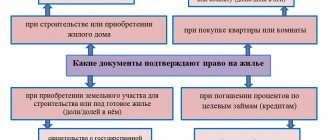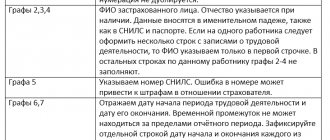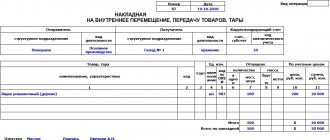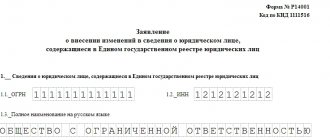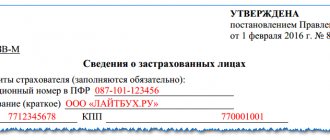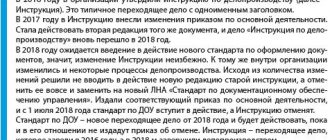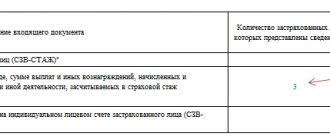A certificate of the cost of work performed and expenses KS-3 is considered a mandatory document that is drawn up during the construction of a building, repair, reconstruction and other types of construction and installation work (construction and installation work). It is part of the primary accounting documents, serves for accounting calculations and tax payments, and therefore is important for the financial statements of the organization.
As an important financial document, the certificate must be drawn up strictly taking into account the requirements. For this purpose, there is a unified form of certificate KS-3 , approved by the relevant document (Resolution No. 100 dated November 11, 1999). KS-3 is provided to the customer as a report on the cost of work performed, which are indicated in the estimate documentation. The document is intended for settlement with the customer for completed construction and installation work. Signing the certificate means the completion of the construction process and complete delivery of the construction project.
Practical application of the KS-3 certificate
Payment for construction and installation work occurs only on the basis of a signed KS-3 . If it is missing, the accounting department of the general contractor (customer) cannot fulfill its payment obligations. It is in such a certificate that a list of all works is given, indicating their cost. The total amount including VAT is the final price of construction and installation work. The data coincides with the preliminary estimate, and also includes previously unaccounted expenses:
- changes in prices for materials and raw materials used;
- increasing wages for contractor employees;
- changes in prices for rental of construction equipment and machinery;
- various allowances (for work in the Far North, hazardous working conditions, the need to travel, etc.);
- penalties accrued by the customer for violations of contractual obligations;
- other expenses incurred that affected the initially declared cost.
What is this form and where is it used?
The frequency of information generation and the payment procedure are stipulated in the contract. The form is used by enterprises of all forms of ownership.
Form KS-3 is a primary accounting document for accounting transactions and taxation.
The form contains information not only about the cost of work, but also the composition of costs grouped by type. The list of costs indicated in the certificate corresponds to the construction and installation work estimate documentation and may include actual costs not included in the preliminary estimate.
Costs not included in the original estimate but included in KS-3 include:
- Increase in the cost of used construction and finishing materials.
- Increase in wages, bonus payments and contributions to the budget.
- Changes in the cost of renting equipment used in construction.
- Allowances that increase the cost of work in the Far North and similar regions.
- The cost increased due to the use of coefficients taking into account the traveling, high-altitude nature of work and an allowance for work in the winter.
- Other unforeseen expenses that correct the initial data.
The form is used to document the results of civil construction, including construction and installation works with the participation of government subsidies.
Basic rules for drawing up a KS-3 certificate on the cost of work
The KS-3 certificate is drawn up in two copies: one is given to the contractor, and the other remains with the customer. If there is a third party, for example, a creditor or investor, they may also express a desire to receive this document. In this case, another certificate is drawn up. To do this, it is necessary to send a corresponding request to either party, i.e. the document is provided to the credit institution or investor upon request.
Since the KS-3 is standard and unified, no changes are allowed to it, including changing, removing or adding new lines. It is also prohibited to change information already entered. All information and data must be entered without abbreviations, and for enterprises it is mandatory to indicate the organizational and legal status indicated in the registration documents.
What is needed to obtain a KS-3 certificate
To issue a certificate in form KS-3 , two documents are required:
- A government contract or work agreement that serves as the basis for the execution of work.
- Act in form KS-2. Represents an act of acceptance of work performed. This document and the KS-3 certificate always accompany each other. The act lists the names of the works with a price excluding VAT.
- Additionally, you can look at the information in the KS-6a log, but more often it is not filled out.
The final amount in the KS-3 certificate is equal to that indicated in the act or several acts of KS-2 for a separate reporting period. KS-3 can be compiled not only for the entire facility, but also for its individual parts, but the full cost of the work is indicated in both cases.
The document itself can be drawn up on paper or in electronic form with an electronic signature, which corresponds to clause 9 of the Federal Law of December 6, 2011 No. 402-FZ “On Accounting”. The unified form can be filled out not only manually, but also in the programs “1C: Accounting”, “Kontur”, “Class365”, Microsoft Excel.
How to fill out
Instructions for filling out forms KS-2 and KS-3 will help you enter the data correctly, a sample of which you can download in the article.
First, let's look step by step at how to draw up the KS-2 act.
Step 1. Fill out the introductory part - the header of the form. Information about the investor is filled in if there is such an economic entity in the contractual relations of the parties.
The basis for entering information about the customer and contractor is their registration information. Here you need to indicate the name of both organizations, their address, contact phone number and OKPO of each party.
Step 2. Fill in the “Construction” column - the address of the construction site under a government contract. In the “Object” field, indicate the full name of the subject of the contract.
In the fields we indicate the type of activity of the organization according to OKDP, the details of the contract - the number of the government contract and its date.
Step 3. We generate information about the period of work and indicate the details of the act. It is assigned a number in order and its date is indicated. In the “Reporting period” plate we reflect the start and end dates of work.
Step 4. We enter the cost of construction, repair or installation work in accordance with the estimate. The amount must match the price of the work specified in the contract and be written in rubles.
Step 5. Fill out the table. To find out how to correctly fill out the KS-2 sample, you need to understand the formation of information in the tabular part of the form. The table of this act is a reflection of the estimate for performing work under a government contract. In this case, the form can accumulate data from several estimates.
All numbers in order (column 1), items according to the estimate (item 2) and the name of the work performed (item 3) are written down similarly to the lines of the estimate calculation. Numbers from the collections of federal unit rates (FER) are indicated in column 4 for each type of work, if available for this category. Column 5 reflects the unit of measurement - exactly as it is written in the estimate. It is not allowed to record the volume of work performed in percentage and proportional terms. Column 7 - “Price per unit in rubles.” — is formed using data from FER collections. If the terms of the contract require a fixed cost for contractual activities, then dashes are indicated in column 7.
Column 8 reflects the actual cost of work based on the estimate, which is an integral annex to the government contract. This column can also be filled in using the calculated values for each item from the collections of federal unit prices.
Step 6. When the customer verifies the data from the act with the estimate and actual volumes, the KS-2 act is signed by the manager or other responsible person.
The document is drawn up in two copies. The seal is affixed only if it is used by institutions. KS-2 also reflects all the comments that the customer makes to the contractor regarding inadequate quality, volume or deadlines.
The correct sample for filling out the 2021 KS-2 form looks like this:
Filling out a certificate of cost of work
A certificate of the cost of work performed and expenses has two sides: front and back. On the title page you need to indicate certain information:
- Information about the organization indicating OKPO codes (they can be found in the extract from Rosstat data). You must write the name and address of the company.
- In the line “Construction” - the name and location of the object without indicating OKPO.
- Opposite the item “Contract” is the number and date of its preparation.
- Serial number and date of registration, and next to it is the reporting period in the format DD.MM.YYYY.
If a certificate is drawn up for a given object for the first time (first percentage), then the serial number of the document should be the number 1. In addition to the requirements of the general procedure for filling out, there are individual requirements of customers. He can ask for a division into the price before and after indexing, indicate codes for a specific type of work: construction and installation, commissioning, etc.
Nuances of filling out the title page
The title page of the document primarily reflects important information about the parties to the transaction. If the agreement does not contain information about the investor (third party), then there is no need to fill in the “Investor” field. The data of the customer and the contractor must be filled out strictly according to the registration and constituent documents of the organizations, including the charter, certificate and extract from the Unified State Register of Legal Entities.
In terms of cost, it is very important that the data comply with the terms of the concluded contracts and are confirmed by design and estimate documentation. Particular attention must be paid to the reporting period. Here you need to take into account what requirements the customer’s accounting department places on it, and indicate dates in accordance with their wishes.
Question with the reporting period
Accounting employees of different customers often have different requirements regarding the reporting period. There are several opinions:
- The scope of the reporting period must correspond to the months, even if the document was not drawn up on the last day of the month. For example, KS-3 No. 1 was signed on 09.27.2020, then it will have a reporting period from 09.01.2020 to 09.30.2020, and certificate KS-3 No. 2 dated 10.19.2020 - from 01.10 .2020 to 10/31/2020
- The KS-3 certificate must cover all days before the signing date, which should be the end date of the reporting period. Then, if KS-3 No. 1 was issued on 09/27/2020, then its reporting period will be from 09/01/2020 to 09/27/2020. The next KS-3 No. 2 then on 10/19/2020 will already be from 09/27/2020 until October 19, 2020
The accounting department of some customers may not attach serious importance to the reporting period. Sometimes the expected interest dates are indicated approximately in the form “no later than the 20th of each month.”
Filling out the table section
The next part of the document is presented in a table consisting of six columns. What information needs to be provided here:
- Column 1. The first column indicates the number of work performed in order.
- Column 2. In the next column, you must indicate the cost item: type of work performed, name of the stage, facility, launch complex or equipment.
- Column 3. If the work has a code, it must be indicated in the third column.
Columns four to six show the cost of work performed and costs for different periods. Columns 4 and 5 are filled in cumulatively, taking into account funds already disbursed from the beginning of the work and the beginning of the year, respectively. Column 6 indicates the cost for the reporting period, which must correspond to the act/acts of KS-2.
After listing all types of work, it is necessary to calculate their final cost. It is entered in the cell opposite “Total”. The line below indicates the amount of VAT, and the next line indicates the cost including VAT.
What does it mean to fill with a cumulative total?
The concept of “cumulative total” involves the calculation of subtotals at the end of each intermediate period. Thus, the data in column 4 “From the beginning of the work” and in column 5 “Since the beginning of the year” are necessary in order to monitor the compliance of the volume of work performed with the estimate documentation (not to go beyond the estimate).
Filling with a cumulative total is considered more complex, but this approach is necessary when performing work step by step. Here you will need to know the amount of work for different periods, as well as create a certificate for each acceptance certificate, while each subsequent one reflecting information from the previous one. Eg:
- The first part of the contractor's work costs 35,000 rubles. The reporting period is 01.08.2020-31.08.2020. For them, an acceptance certificate for KS-2 was drawn up, and then a certificate for KS-3, where the amount of 35,000 rubles was indicated in columns 4, 5 and 6.
- The second part of the work cost 20,000 rubles. Reporting period – 09/01/2020-09/30/2020. Here, when drawing up the KS-3 certificate, in column 4 the amount of 35,000 + 20,000 = 55,000 rubles is indicated. This is the price of work on an accrual basis. Column 5 shows the amount for the entire year: if no more work was performed previously, then the amount will also be 55,000 rubles. in this case, in column 6 you need to indicate the amount for the reporting period - 20,000 rubles.
Thus, the KS-3 certificate allows you to take into account separately completed work and indicate changes relative to the beginning of the year and the previous acceptance certificate.
How to complete the certificate
When listing costs, it may be necessary to indicate additional work. They do not need to be decrypted if they are decrypted in other documents, for example, in an estimate or application. But experts recommend listing and describing everything in detail.
After specifying the work and calculating all types of costs, all that remains is to sign the certificate. The customer (general contractor) and the contractor (subcontractor) must leave their signatures. The corresponding lines indicate the position, signature and its decoding.
The document can be signed by a manager or an authorized representative on behalf of the customer, and on behalf of the contractor - by a manager or employee responsible for the execution of the work. The certificate is certified by a seal on both sides.
Step-by-step instruction
To fill out the certificate correctly, you will need to prepare a contract and other sources of information. First of all, you need to create a title page. It is filled out as follows:
Enter information about the contractor, customer and other construction participants (name of organization, contact details) on the title side of the certificate. Next to the name of the organization, in the appropriate cell, indicate the OKPO code (issued to each company upon registration).- Indicate the location of the construction site and the type of construction ongoing.
- Enter the date and number of the agreement on the basis of which the certificate is created, and the date of creation of the document itself.
- Indicate the dates of the reporting period (start and end dates of the construction manipulation stage).
The main part of the document contains a table with 6 columns (see Table 1).
| Column number | Filler actions |
| 1 | indicate serial number |
| 2 | enter the name and type of service provided |
| 3 | indicate the code (if the performed action has a code) |
| 4 | indicate the price on an accrual basis |
| 5 | indicate the planned cost |
| 6 | indicate a specific price for the reporting period |
If the price of work for the reporting period has not changed, and the certificate is issued for the first time, then the same values are indicated in columns 4, 5 and 6.
After specifying all the numbers, the final calculation is carried out. The data is indicated at the very bottom of the table. In the required fields you will need to indicate the price of all work without VAT, the amount of VAT and the amount including VAT.
The last step is signing. On the customer’s side, the signature is carried out by the director or his representative. On the part of the contractor, the director or person responsible for performing the work.
Other important rules for working with the KS-3 certificate
If there is a disagreement between the parties regarding the final cost, the disagreeing party may leave the document unsigned. In this case, the corresponding mark is placed in the acceptance certificate for KS-2, which is invalid without KS-3. If the amount in the estimate is indicated including VAT, then to obtain the amount without a surcharge, 20% must be subtracted from this value.
If the KS-3 certificate is missing or incorrectly drawn up, you may receive an administrative penalty and a fine. Therefore, it is very important not to deviate from the rules of registration and the unified form of the document. Also, in accordance with the rules for storing primary accounting documentation, a certificate of the cost of work performed after registration and signing must be stored for at least 5 years.
Is a unified form required?
The unified form KS-3 continues to be actively used in the construction industry, despite the adoption of the new accounting law in 2013, which abolished the requirement for the mandatory use of standardized forms. This gives the organization the right to develop its own free form of certificate, provided that it necessarily contains the details required by clause 9 of the Federal Law of December 6, 2011 No. 402-FZ “On Accounting”. Required details include:
- document's name;
- Date of preparation;
- name of the organization that compiled the document;
- a fact of economic life and the value of its measurement, indicating the units of measurement;
- job title of the person responsible for the transaction;
- signatures of the persons responsible for the transaction.
The document must be correctly drawn up and signed by all parties, otherwise it will not have legal force, and the contractor will not be able to demand payment for the work performed. Therefore, if you are not sure of the correctness of the execution, experts recommend contacting the appropriate organization that provides services for the preparation of such documents.
When needed
Resolution of the State Statistics Committee No. 100 dated November 11, 1999 indicates what these forms KS-2 and KS-3 are - they are the primary documents according to which completed work is accepted. KS-2 is an acceptance certificate confirming the full and high-quality fulfillment of contractual obligations. KS-3 - certificate of contract cost, basis for mutual settlements. Both forms are a mandatory and integral annex to contracts for construction, repair, and installation.
Design rules
Businesses cannot create or modify the form themselves to include additional lines. The obligation to use only the unified form arises if the use of the form is confirmed by orders or acts of ministries and departments.
When filling out the unified form, you must adhere to the following rules:
- The details of the parties are indicated in full, without abbreviations or inaccuracies. The information must correspond to the constituent data and information of other forms (agreement, estimate, act) included in the package of documents for this construction. If discrepancies between indicators are detected, disputes may arise with the Federal Tax Service.
- These certificates may concern part of the object, for example, when constructing several entrances to an apartment building at the same time. When indicating the cost of a part of a building, it is necessary to enter data on the object as a whole (total amount, including).
- The date of preparation of the certificate is the last day of the reporting period.
- The use of abbreviations, including those of a special nature, is not recommended in the document. The document, along with other functions, is intended for use in taxation and is subject to recognition by tax authorities as expenses for one party and income for the other.
The final amount of the KS-3 document differs from the final indicator of KS-2. The amount of the act does not include VAT charged on the result obtained. In KS-3, the cost of work is subject to VAT, highlighting it on a separate line and indicating the total amount payable, including tax.
Certificates of completed work
Try it and you will be surprised how easy it has become! Step-by-step instructions for filling out Both sections of the document must be filled out - the title and tabular parts of the form. The title section indicates:
- Name and address of the location of the parties - the investor (financing the construction and installation work), the customer (directly ordering the object), the contractor (carrying out the work). Enter contact details of persons - telephones, faxes. The field with information about the investor is filled in if available.
- The name and construction address of the facility, assigned after receiving permission to carry out construction and installation works.
- Number and date of the contract on the basis of which the work is being carried out.
Execution of work under an additional agreement requires that the document number be indicated to the left of the contract data.
- Number and date of the certificate for the specified time period.
How to fill in with a cumulative total
If the state contract stipulates stage-by-stage execution of work, then the certificate is drawn up differently. A form is generated for each stage. Here's how to fill out KS-3 with a cumulative total; an example of filling illustrates the basic rules:
Step 1. Fill in basic information about the customer and contractor.
Step 2. Provide the details of the certificate – number and date.
Step 3. Fill in Column 4 with an accrual total from the moment the work began. The reporting period is taken into account. Amounts are paid without VAT.
Step 4. In column 5, the cost is given on an accrual basis from the beginning of the year. Without VAT.
Step 5. Column 6 is reserved for filling out information exclusively for the reporting period. The price is indicated without VAT.
Step 6. The totals are summed up in the “Total” cell.
Step 7. VAT is calculated for each column.
Value added tax refers to indirect payments. Payment of this tax is carried out by the seller when selling products or work to the consumer. Tax payers are organizations, as well as individual entrepreneurs. In total, payers can be divided into two main groups - those who pay a fee when selling goods and when importing products.
When calculating the amount payable, it is necessary to calculate the amount of payment calculated upon sale, the amount of deductions and recovery indicators. Before completing VAT documentation, it is recommended that you familiarize yourself with the possible nuances. There are some features of drawing up KS-3 without VAT, samples of filling.
Legal basis
The unified form “KS-3” was approved by Resolution of the State Statistics Committee of Russia No. 100 of November 11, 1999 “On approval of unified forms of primary accounting documentation for accounting for work in capital construction and repair and construction work” as part of the “Album of unified forms of primary accounting documentation for accounting works in capital construction and repair and construction work .
Its full name: “Certificate of the cost of work performed and expenses”
According to an excerpt from the “ Album of unified forms of primary accounting documentation for accounting for work in capital construction and repair and construction work ,” certificate KS-3:
Used for settlements with the customer for work performed. The certificate is drawn up in the required number of copies. One copy is for the contractor, the second is for the customer (developer, general contractor). The Certificate is provided to the financing bank and investor only upon their request. The work performed and costs are reflected in the Certificate based on the contract value. A certificate in “Form N KS-3” is drawn up for construction and installation work performed in the reporting period, major repairs of buildings and structures, and other contract work and is presented by the subcontractor to the general contractor, and by the general contractor to the customer (developer). The cost of work performed and expenses includes the cost of construction and installation work provided for in the estimate, as well as other costs not included in unit prices for construction work and in price tags for installation work (increasing costs of materials, wages, tariffs, costs of operating machines and mechanisms, additional costs when carrying out work in winter, funds for the payment of allowances for the mobile and traveling nature of work, allowances for work in the Far North and in similar areas, changes in the conditions for organizing construction, etc.). In column 4, the cost of work and expenses is indicated on an accrual basis from the beginning of the work, including the reporting period. In column 5, the cost of work and expenses is indicated on an accrual basis from the beginning of the year, including the reporting period. Column 6 highlights data for the reporting period. The data is presented for the construction as a whole, highlighting data for each object included in its composition (start-up complex, stage). At the request of the customer or investor, the Certificate provides data on the types of equipment related to the construction (start-up complex, stage), the installation of which began in the reporting period. In this case, column 2 indicates the name and model of the equipment, and columns 4, 5, 6 - data on the installation work performed. The “Total” line reflects the total amount of work and costs excluding VAT. The VAT amount is indicated on a separate line. The “Total” line indicates the cost of work performed and expenses including VAT.
